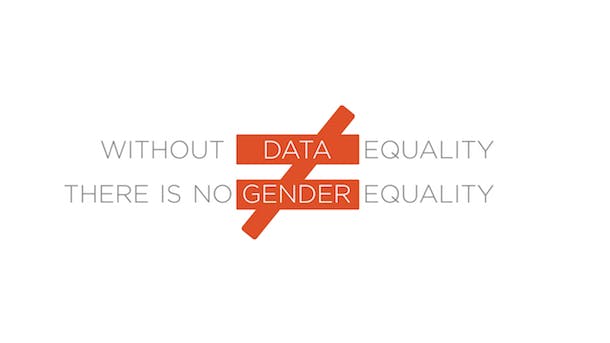
2016 will go down as the year that gender data went mainstream. Branded as “cool” by the international development community and celebrated in a film that made viewers dance for data, it was a year of progress for the gender data agenda. Here are five highlights from the year:
1. “Action for Gender Data” and Melinda Gates’ Landmark Speech in Copenhagen
On May 17, 2016, at the Women Deliver conference in Copenhagen, Data2X and 10 government, multilateral agency, and philanthropic partners released a statement on action for gender data. A Joint Announcement on Implementation of Agenda 2030: Accelerating Progress Towards Gender Equality declared that closing gender data gaps is a critical and necessary step toward achieving gender equality and the Sustainable Development Goals.
As the statement went public, Melinda Gates delivered a speech sharing her perspective on exactly why gender data is so important, stating: “By adopting the SDGs the world agreed to achieve gender equality by 2030. But we cannot close the gender gaps without first closing the data gap. … [The Gates Foundation is] committed to changing that by investing in better data, policies, and accountability.” She also announced the foundation’s $80 million financial commitment to improving gender equality, including $40 million specifically to support efforts to improve the quality, transparency, and use of gender data for decision making and accountability.
2. The Commitment of Resources to Gender Data Announced at Women Deliver was only the Beginning
Spurred by the groundswell of support for gender data at Women Deliver and by a growing recognition of the need for good data to achieve the Sustainable Development Goals, numerous UN Agencies and national governments stepped up to the gender data plate in 2016.
UN Women launched its flagship gender data initiative, “Making Every Woman and Girl Count,” during the 71st UN General Assembly, while UNICEF spearheaded an effort to make better data about adolescent girls the focus of International Day of the Girl in October. The Government of Mexico inaugurated a new Global Centre of Excellence in Gender Statistics, the Government of Australia committed significant funding to support data collection at the individual level, and USAID announced financial support for expanding data collection in areas beyond the demographic health surveys.
3. Attention Turned to Monitoring of the Sustainable Development Goals
If 2015 was the year of agreeing on the Sustainable Development Goals, 2016 was the year of getting concrete about how to measure achievement of these broad goals. The good news is that the discussions resulted in some exciting initiatives, including the aforementioned UN Women initiative, as well as several civil society consortiums including the SDG Tracker for Girls and Women, an exciting new civil society and private sector partnership working to track progress across all the goals. Additionally, pilot projects are underway to examine the use of new data sources – such as citizen-generated data and big data – to monitor movement on the indicators of the goals. There is broad agreement that girls and women will not be left behind by the 2030 Agenda.
4. The Global Forum on Gender Statistics Met for the 6th Time
Since its creation in 2007, the Global Forum on Gender Statistics has convened biannually, bringing together users and producers of gender statistics to assess technical approaches and develop new methods of measuring and collecting data. The sixth gathering in Helsinki in October, expertly convened by the UN Statistics Division and Statistics Finland, was a gathering of the top technical minds in gender statistics. Topics ranged from how to accurately measure and value how women spend their time and how that impacts a country’s understanding of women’s economic participation, to the complexities of data gathering on violence against women and girls. These findings have an important impact on policy and must be more deeply understood and used by policymakers – a key goal for Data2X in the years ahead.
5. Progress on the Technical Front
Data2X released several exciting new research findings in 2016 that have significant implications for gender data agenda setting and advocacy. Our researchers published an important article, Closing the Gender Data Gap, that explains why we lack the data needed to achieve gender equality as promised by the Sustainable Development Goals. Our case study on inclusive financial systems and research papers on civil registration and vital statistics in Africa and Asia indicate new directions for work in the coming year. We also commissioned leading researchers to write brief think pieces on the critical but complex topic of how to measure “women’s economic empowerment,” and convened a meeting with the Center for Global Development and International Development Research Centre. And our Ready to Measure research identified 16 indicators of the global goals for girls and women with agreed upon definitions, existing data, and wide coverage. This is a big deal because it means that we can jumpstart gender data collection with these indicators.
These gender data milestones of 2016 are a cause for celebration not just for what they achieved, but for how they set the stage for the coming year. We are entering 2017 with established financial and policy commitments to gender data, and kicking it off with the first ever UN World Data Forum. For all of these reasons, Data2X is celebrating 2016 and looking forward to ongoing progress on gender data.
To learn more about Data2X, visit data2x.org.



 View All Blog Posts
View All Blog Posts